Managing Contacts via the Solution (Contacts Sync)¶
For users of the Email Sidebar on:
6 min read
Revenue Grid synchronization performs continuous two-way syncing of your business Contacts between MS Exchange / Office 365 or Gmail and Salesforce. Once activated, data synchronization runs every 30 minutes on server side. Bidirectional mail server ↔ Salesforce syncing of Contacts carried out by RGES sync is a versatile process that also ensures conveying of Salesforce contacts into your Exchange address book and their use by MS Outlook Desktop / On the Web AutoComplete on email composing or meeting creation.
Tip
Refer to this article to learn how MS Exchange / Office 365 Contact item fields are matched with Salesforce Contacts by RG Email Sidebar. Also refer to this article for more details on configuring objects synchronization.
Important
Depending on your license, the appearance of your Sync Settings page may be different. Below you can find instructions on how to renew access credentials on the Legacy and New Sync Settings pages. Proceed with the steps according to the appearance of your Sync Setting page:
Enabling Contacts sync¶
After RGES sync is set up, to enable Contacts sync, go to the Sync Settings page (see the article Opening the Dashboard). You will see the General subtab where you can enable the Sync Salesforce contacts switch button in the Contacts block:
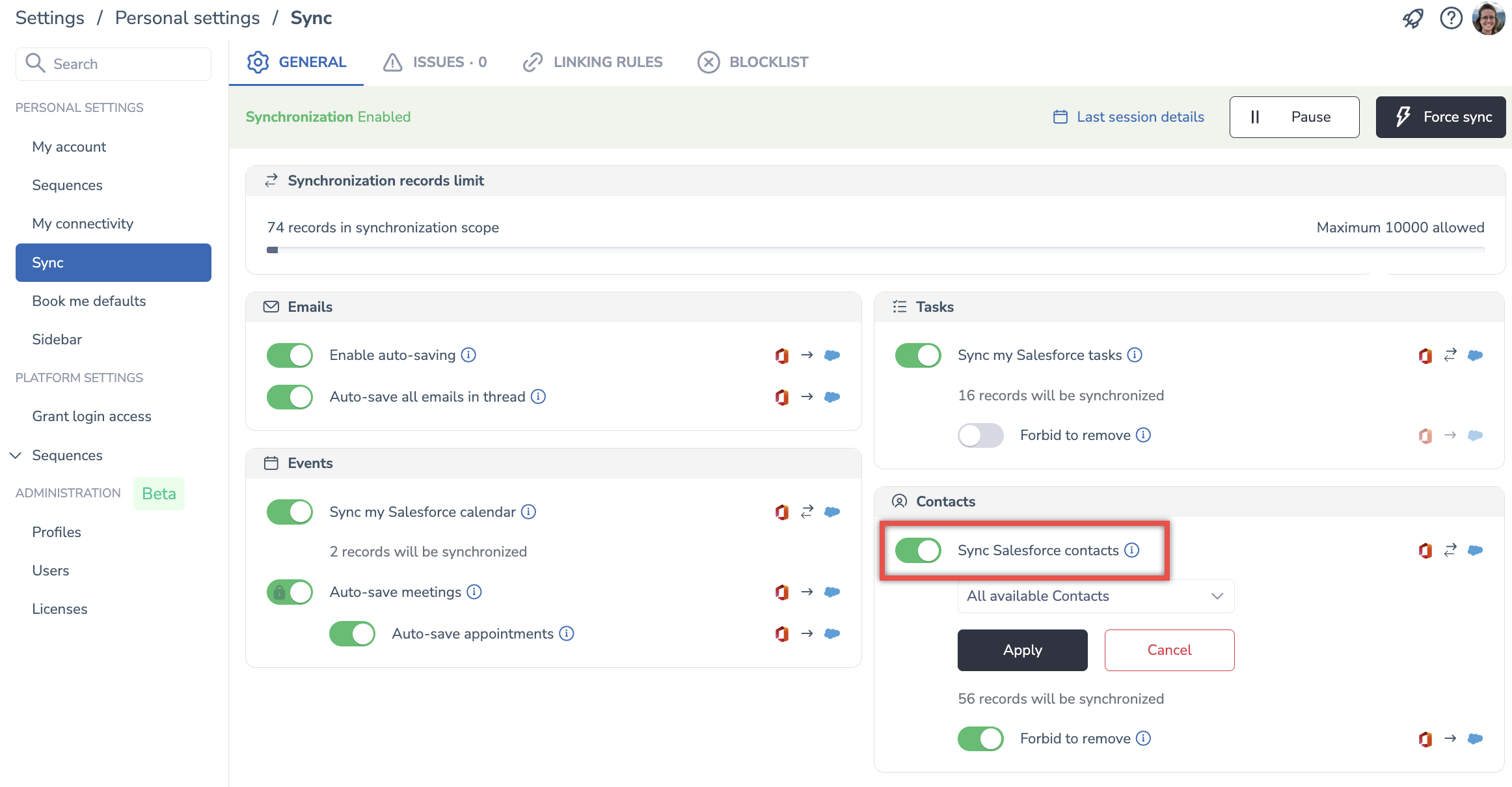
To set a focused Salesforce list view to be applied by RG Email Sidebar on Contacts downsyncing from Salesforce to your mail client:
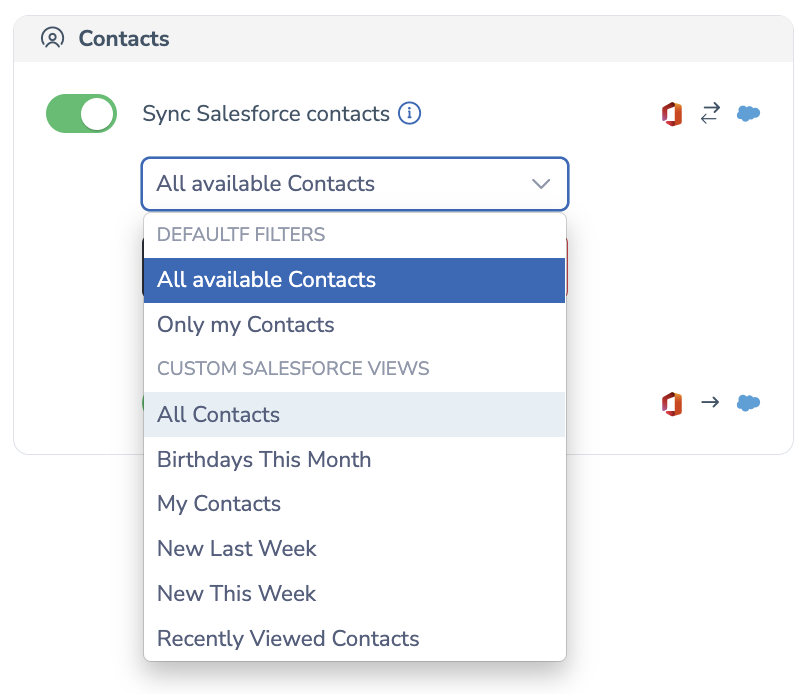
-
click Customize scope in the Contacts block
-
select one of the options: All available Contacts, Only my Contacts (this view is set by default), Custom Salesforce view
-
in case need to select Custom Salesforce view, specify a preconfigured Salesforce Contacts custom view in the corresponding picklist
- click Apply to enable the view
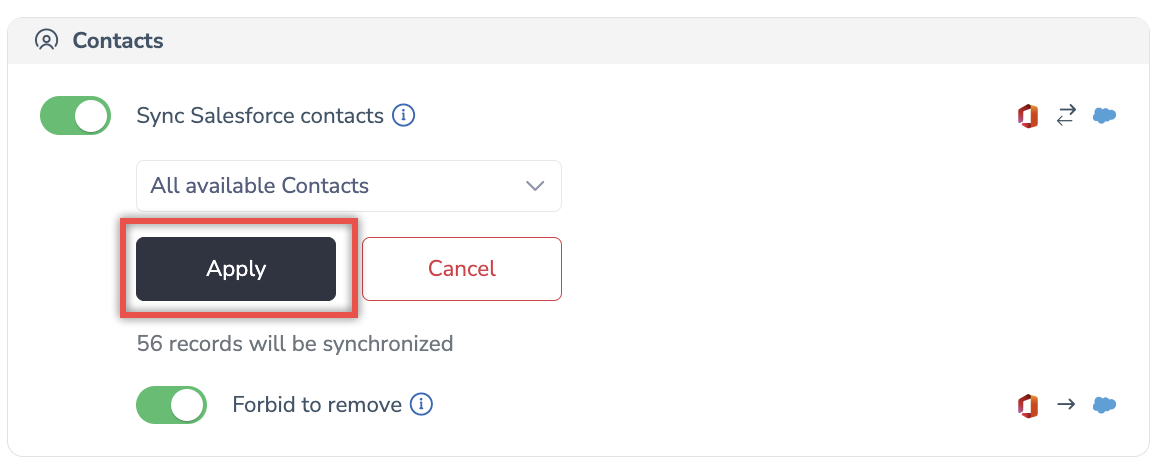
After RG synchronization is set up, RG Email Sidebar creates in MS Exchange / Office 365 a dedicated folder Salesforce Contacts and mirrors all business contacts which you own in Salesforce as Exchange/Office 365 contacts put in this folder, matching their fields according to established mapping patterns. However, note that your Contacts existing in MS Exchange / Office 365 prior to RGES sync activation will not be synced with Salesforce, unless you specifically select them to be synced using either one of the methods described below.
Marking Contacts to be synced¶
Tip
See this article to learn how to sync Gmail contacts
There are two ways to synchronize an MS Exchange / Office 365 contact with Salesforce via RG Email Sidebar:
By creating or moving a Contact in the Salesforce Contacts folder¶
- Select the Salesforce Contacts folder in MS Outlook Desktop / On the Web Contacts tab and click the New Contact icon; then fill in the contact’s data and save it. RG Email Sidebar will assign the new Contact the Salesforce category and create of a matching Contact object in Salesforce by RGES sync.
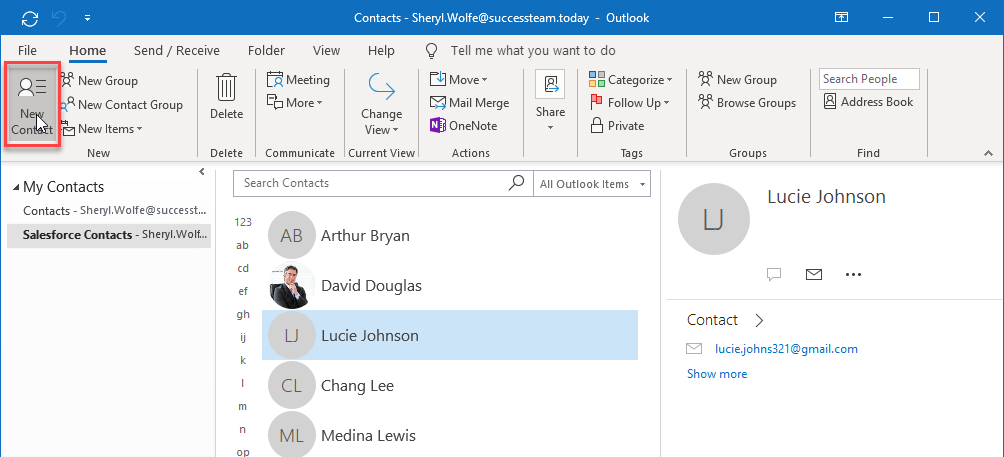
- Alternatively, drag and drop or right-click and move an existing Contact to the Salesforce Contacts folder - it will be saved in Salesforce on the following sync session. To be continuously synced with Salesforce, contacts should remain in this folder; any updates made on either side will be mirrored on the other, through two-way synchronization.
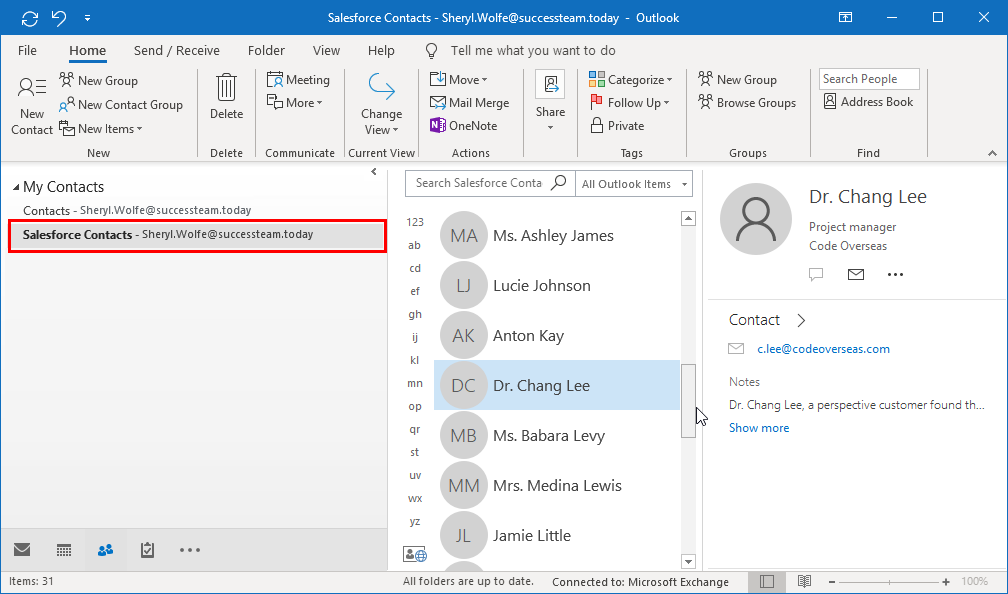
Syncing a Contact using the custom Salesforce category¶
Alternatively, you can save a contact in Salesforce by assigning it the Salesforce category.
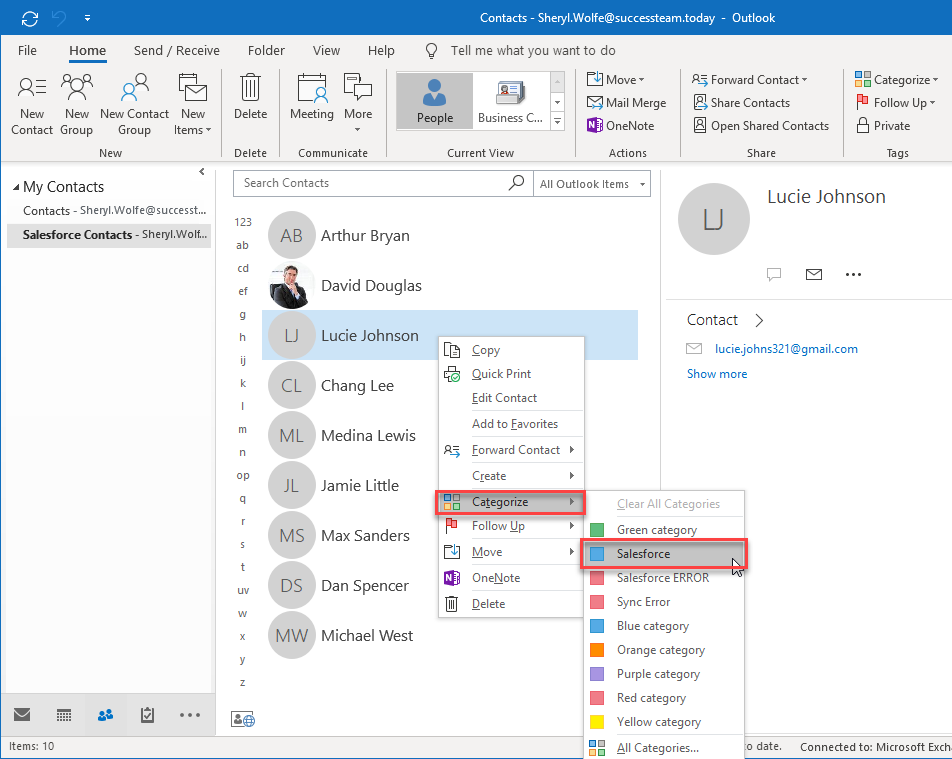
;
RG Email Sidebar will move the marked contact to the Salesforce Contacts folder and create a matching Contact object in Salesforce on the following sync session.
Note
If the Salesforce category is unassigned after an item was moved to the dedicated Salesforce folder and synchronized with Salesforce, RGES sync will automatically restore the category on this item on the following sync session – items will remain synced if you just unassign the custom category from them but leave them in the dedicated folder. In the opposite case, if a synchronized item is removed from the dedicated Salesforce folder to be unsynced, RGES sync will automatically remove the custom category from this item on the following sync session
Note
Your personal MS Exchange / Office 365 contacts located in the default Contacts folder or other folders will not get saved in Salesforce. Only the contacts assigned the Salesforce category or moved to the Salesforce Contacts folder will get saved
Special patterns applied on Contacts processing¶
When a Contact is created and synchronized from MS Outlook to Salesforce, the following pattern is applied in order to find a relevant Account to link this Contact to:
1. The value of the Contact’s Company field is used to search for relevant Account(s) in Salesforce
2. If an Account with exact Company field matching is found - the Account is used for Contact linking. In case there are several Accounts found, one with the earliest creation date is used
3. If there is no direct match, the Company field’s value is searched for among sub-strings of Account names in Salesforce, and if there is only one matching Account found, it is used to link the Contact to. If no relevant Account is found this way, see point 4
4. If no matches with the Company field’s value are found among Account names in Salesforce, a Contact with empty Account association is attempted to be created in Salesforce
Tip
In case you want to adjust the Contacts processing mechanisms to meet your company’s specific preferences: by adding extra required fields, changing default values in some fields, ensuring auto-linking to a specific Account, etc., please send a corresponding configuration request to our Support team, describing your preferences in detail
Contact updates syncing
When a Contact located in the Salesforce Contacts folder in MS Outlook is modified, these changes are conveyed (up-synced) to its matching Salesforce Contact object on the following sync session. A two-way sync pattern is used, so if you modify a Contact’s fields values in Salesforce, they will be down-synced to its matching Contact in MS Outlook.
Deleting a Contact in Exchange/Office 365
If you remove an already synchronized Contact from the Salesforce Contacts folder or delete it, RG Email Sidebar checks the value of the Auto-removal setting (see the article Choosing What to Synchronize) and proceeds accordingly:
-
if Contacts Auto-removal is allowed - the Contact gets deleted from Salesforce as well, on the following sync session
-
if Contacts Auto-removal is not allowed - the Contact gets automatically re-created in the Salesforce Contacts folder on the following sync session, its fields’ values retrieved from Salesforce
Adding a Contact in Salesforce
When a new Contact is added in Salesforce and it is visible within the set view (see above), it appears in the Salesforce Contacts folder in Outlook after the next synchronization.
Modifying a Contact in Salesforce
When an existing Contact is modified in Salesforce and it belongs to the set list view (see above), the corresponding contact in the Salesforce Contacts folder in MS Exchange / Office 365 gets updated, on the following sync session.
Deleting a Contact in Salesforce
When a synced Contact is deleted in Salesforce, the corresponding contact in the Salesforce Contacts folder in MS Exchange / Office 365 gets deleted as well, on the following sync session.

We would love to hear from you!
